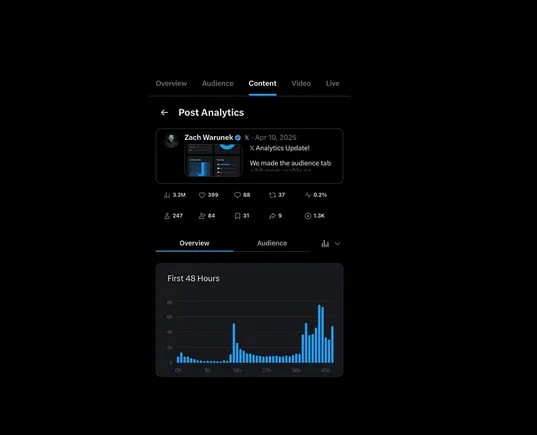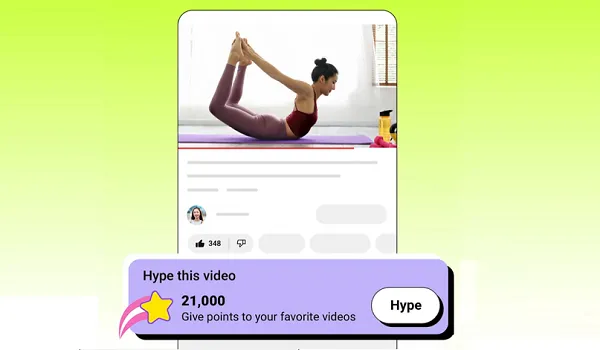Being asked to do work that’s not in your job description? 5 smart ways to draw the line
You’re already juggling competing deadlines, back-to-back meetings, and strategic priorities. Then the Slack message arrives: “Hey, can you just take care of this?” It’s not in your job description. It’s not aligned with your goals. And it’s not the first time. Whether it’s managing logistics, picking up someone else’s project, or being asked to take notes again—many workers are routinely handed tasks that fall outside their role. Often, it’s framed as being a “team player.” But over time, these extra asks can add up to chronic overwork, blurred boundaries, and a stalled career trajectory. Handling these situations well isn’t about being difficult—it’s about being strategic. Here’s how to respond in ways that are clear, confident, and aligned with your long-term goals. 1. Clarify the request—and its relevance Before you respond, take a moment to understand the ask. What’s really being requested? Who should be doing it? And why is it coming to you? This is especially important for tasks that seem “quick” but aren’t strategic—like organizing team events, taking meeting minutes, or picking up admin no one else wants. These are often invisible labor tasks that disproportionately fall on women and people of color, particularly in hybrid and virtual environments. What to say: “Happy to support—can you help me understand how this fits within my priorities or where it came from?” Or: “Is this something our [ops/admin/project] team would usually handle?” Asking these questions reframes the conversation and makes the invisible visible—without defensiveness. 2. Pause before responding You don’t have to answer immediately. One of the biggest reasons we say yes to things we don’t want (or need) to do is because we’re caught off guard. We’re conditioned to be agreeable and responsive. But taking a beat creates space between the request and your response. That pause can be powerful. It allows you to assess: Do I have the capacity? Is this aligned with my role and goals? What’s the real cost of saying yes? What to say: “Thanks for thinking of me—can I come back to you on this once I’ve reviewed my priorities for the week?” This puts you back in control and gives you room to respond with intention rather than obligation. 3. Don’t confuse being helpful with being responsible There’s a big difference between offering support as a leader and being expected to clean up someone else’s mess. Many high-performing workers default to “I’ll just do it” because it feels faster or more efficient in the moment. But over time, it leads to scope creep, burnout, and resentment. Tasks like organizing team birthdays, onboarding new hires without a handover, or smoothing out interpersonal dynamics often land on women—not because they’re in your job description, but because you’re seen as the reliable one. What to do: Ask yourself: “Is this a one-off favor or an ongoing expectation?” Track how often it happens—and the impact on your core responsibilities. Notice if it’s being evenly distributed across the team—or falling on you by default. Being helpful is a strength. But when it’s at the expense of your boundaries, clarity, or energy, it’s time to draw a line. 4. Practice saying no—without guilt Saying no can feel uncomfortable, especially when you want to be seen as collaborative and competent. But “no” doesn’t have to be harsh. It can be thoughtful, respectful, and still assert your priorities. What to say: “I’m currently at capacity with my core responsibilities and can’t take this on right now.” “That’s outside my scope, and I want to make sure I’m focused on where I can add the most value.” “I’m not the best person for this, but happy to suggest someone who might be.” The key is to remove apology from your tone. You’re not being difficult—you’re being discerning. And that’s what leadership requires. 5. Raise the bigger conversation when needed If you’re regularly being asked to do tasks outside your role—or expected to manage things that aren’t aligned with your position—it’s time to step back and zoom out. This isn’t just about one request. It’s about your scope, your role clarity, and the culture you’re operating in. Use your next check-in or performance review to re-align. Be honest about what you’ve taken on, how it’s impacted your work, and what needs to shift. What to say: “I’ve noticed I’m consistently being asked to take on tasks that sit outside my formal role. I want to make sure I’m being as impactful as possible in my core responsibilities—can we talk about boundaries, priorities, and how to structure my work accordingly?” This kind of conversation not only protects your time—it models leadership for others who might also be navigating blurred lines. The bottom line: Just because you can do something doesn’t mean you should. Your energy, time, and talent are precious—and finite. Protecting your scope i

You’re already juggling competing deadlines, back-to-back meetings, and strategic priorities. Then the Slack message arrives: “Hey, can you just take care of this?” It’s not in your job description. It’s not aligned with your goals. And it’s not the first time.
Whether it’s managing logistics, picking up someone else’s project, or being asked to take notes again—many workers are routinely handed tasks that fall outside their role. Often, it’s framed as being a “team player.” But over time, these extra asks can add up to chronic overwork, blurred boundaries, and a stalled career trajectory.
Handling these situations well isn’t about being difficult—it’s about being strategic. Here’s how to respond in ways that are clear, confident, and aligned with your long-term goals.
1. Clarify the request—and its relevance
Before you respond, take a moment to understand the ask. What’s really being requested? Who should be doing it? And why is it coming to you?
This is especially important for tasks that seem “quick” but aren’t strategic—like organizing team events, taking meeting minutes, or picking up admin no one else wants. These are often invisible labor tasks that disproportionately fall on women and people of color, particularly in hybrid and virtual environments.
What to say: “Happy to support—can you help me understand how this fits within my priorities or where it came from?” Or: “Is this something our [ops/admin/project] team would usually handle?”
Asking these questions reframes the conversation and makes the invisible visible—without defensiveness.
2. Pause before responding
You don’t have to answer immediately. One of the biggest reasons we say yes to things we don’t want (or need) to do is because we’re caught off guard. We’re conditioned to be agreeable and responsive. But taking a beat creates space between the request and your response.
That pause can be powerful.
It allows you to assess:
- Do I have the capacity?
- Is this aligned with my role and goals?
- What’s the real cost of saying yes?
What to say: “Thanks for thinking of me—can I come back to you on this once I’ve reviewed my priorities for the week?”
This puts you back in control and gives you room to respond with intention rather than obligation.
3. Don’t confuse being helpful with being responsible
There’s a big difference between offering support as a leader and being expected to clean up someone else’s mess. Many high-performing workers default to “I’ll just do it” because it feels faster or more efficient in the moment. But over time, it leads to scope creep, burnout, and resentment.
Tasks like organizing team birthdays, onboarding new hires without a handover, or smoothing out interpersonal dynamics often land on women—not because they’re in your job description, but because you’re seen as the reliable one.
What to do:
- Ask yourself: “Is this a one-off favor or an ongoing expectation?”
- Track how often it happens—and the impact on your core responsibilities.
- Notice if it’s being evenly distributed across the team—or falling on you by default.
Being helpful is a strength. But when it’s at the expense of your boundaries, clarity, or energy, it’s time to draw a line.
4. Practice saying no—without guilt
Saying no can feel uncomfortable, especially when you want to be seen as collaborative and competent. But “no” doesn’t have to be harsh. It can be thoughtful, respectful, and still assert your priorities.
What to say:
- “I’m currently at capacity with my core responsibilities and can’t take this on right now.”
- “That’s outside my scope, and I want to make sure I’m focused on where I can add the most value.”
- “I’m not the best person for this, but happy to suggest someone who might be.”
The key is to remove apology from your tone. You’re not being difficult—you’re being discerning. And that’s what leadership requires.
5. Raise the bigger conversation when needed
If you’re regularly being asked to do tasks outside your role—or expected to manage things that aren’t aligned with your position—it’s time to step back and zoom out. This isn’t just about one request. It’s about your scope, your role clarity, and the culture you’re operating in.
Use your next check-in or performance review to re-align. Be honest about what you’ve taken on, how it’s impacted your work, and what needs to shift.
What to say: “I’ve noticed I’m consistently being asked to take on tasks that sit outside my formal role. I want to make sure I’m being as impactful as possible in my core responsibilities—can we talk about boundaries, priorities, and how to structure my work accordingly?”
This kind of conversation not only protects your time—it models leadership for others who might also be navigating blurred lines.
The bottom line: Just because you can do something doesn’t mean you should. Your energy, time, and talent are precious—and finite.
Protecting your scope isn’t selfish. It’s strategic. It’s how you stay focused on the work that matters, create sustainable success, and lead with clarity and confidence.


























































































































































































![How to Find Low-Competition Keywords with Semrush [Super Easy]](https://static.semrush.com/blog/uploads/media/73/62/7362f16fb9e460b6d58ccc09b4a048b6/how-to-find-low-competition-keywords-sm.png)



